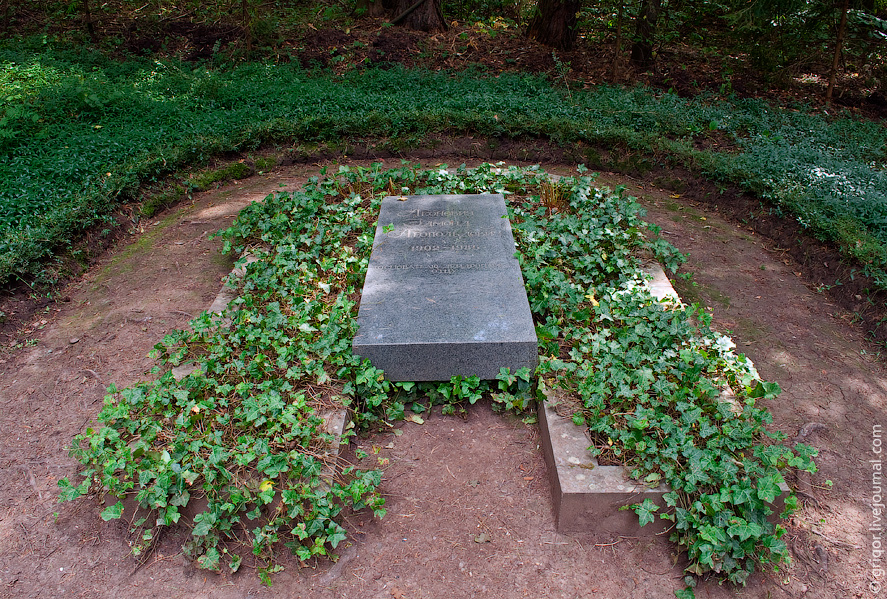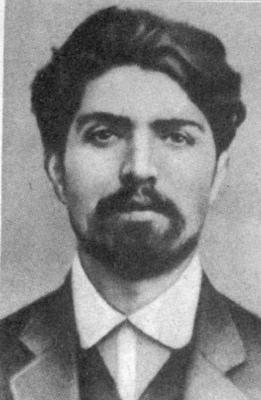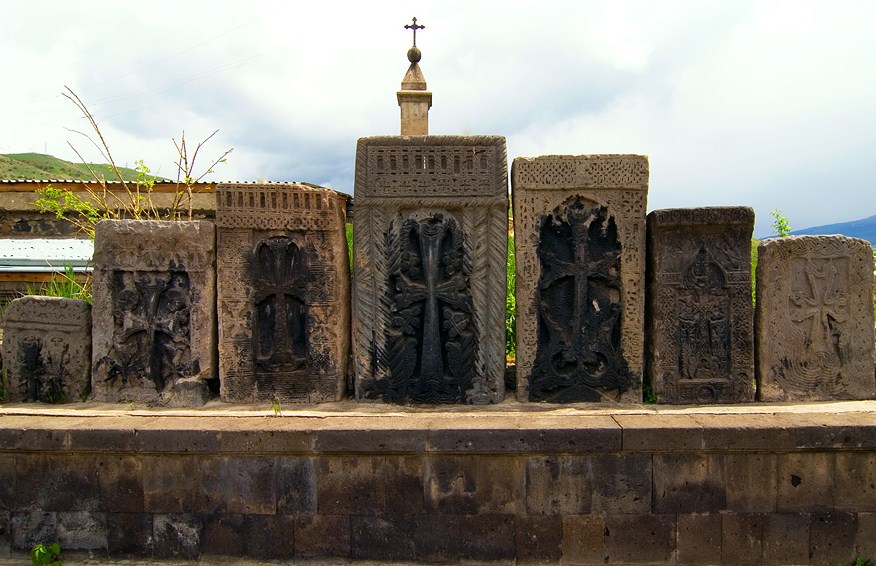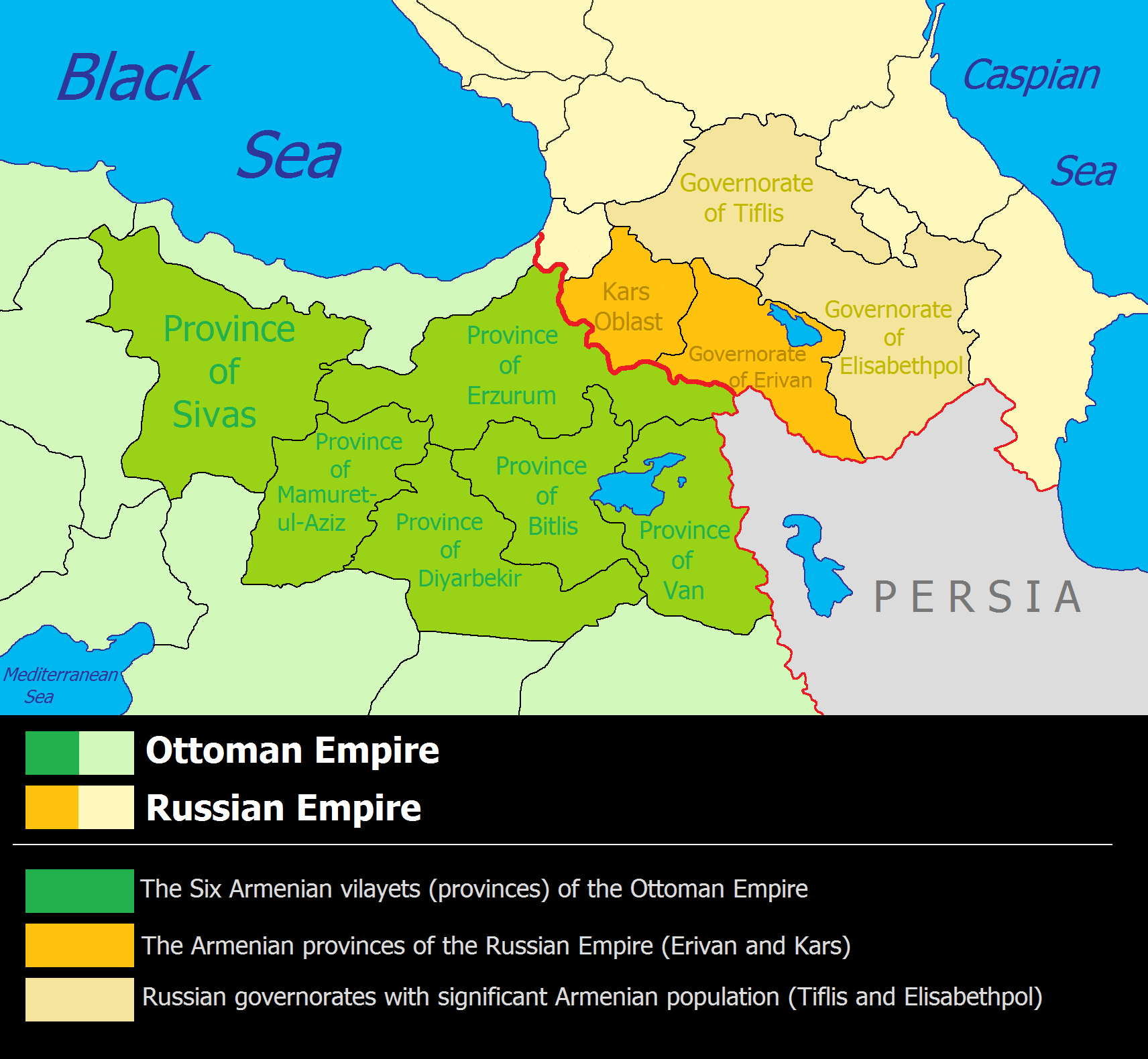|
Stepanavan
Stepanavan () is a town and municipal community in the Lori Province of Armenia. It is located north of the capital Yerevan and north of the provincial centre Vanadzor, halfway between Yerevan and Tbilisi. As of the 2011 census, the population of the town is 13,086. Currently, the town has an approximate population of 10,800 as per the 2016 official estimate. As of the 2022 census, the population of the town is 11,982. Due to its location on the shores of Dzoraget River among the forest of Lori plateau and Bazum mountains, Stepanavan is considered a resort town in northern Armenia. Etymology Stepanavan was founded in 1810 as ''Jalaloghli'', literally meaning ''son of Jalal'' in Turkic languages. The name is derived from the Armenian noble family of House of Hasan-Jalalyan, Hasan-Jalalyan. A khachkar-memorial in the town testifies that the settlement was founded in 1810 by prince ''Davit Hasan-Jalalyan''. In 1923, Jalaloghli was renamed ''Stepanavan'', meaning ''town of Stepan' ... [...More Info...] [...Related Items...] OR: [Wikipedia] [Google] [Baidu] |
Lori Province
Lori (, ) is a provinces of Armenia, province (''Administrative divisions of Armenia, marz'') of Armenia. It is located in the north of the country, bordering Georgia (country), Georgia. Vanadzor is the capital and largest city of the province. Other important towns include Stepanavan, Alaverdi, Armenia, Alaverdi, and Spitak. It is home to the UNESCO World Heritage Sites of Haghpat and Sanahin Monastery, Sanahin monasteries and the well-preserved Akhtala monastery. The province was heavily damaged during the 1988 Armenian earthquake. The province is served by the Stepanavan Airport. Etymology The name Lori (Լոռի) is of Armenian origin (from Armenian "quail"), first appeared in the 11th century when King David I Anhoghin founded the fortified city of Lori Berd Fortress, Lori. The fortress-city became the capital of the Kingdom of Tashir-Dzoraget in 1065. The name Lori later spread through the region and replaced the original name of Tashir. Geography Situated at the north ... [...More Info...] [...Related Items...] OR: [Wikipedia] [Google] [Baidu] |
Stepanavan Dendropark
Officially Sochut Dendropark named after Edmund Leonowicz, commonly knowns as Stepanavan Dendropark (), is an arboretum located near the Gyulagarak village, Lori Province, Armenia. Located around north of the capital Yerevan, the park was founded in 1931 by Polish engineer-forester Edmund Leonowicz. The arboretum is 35 ha in total of which 17.5 ha consist of natural forest and 15 ha of ornamental trees. History This collection expanded along the newly constructed footpaths and vistas which began to reach into the natural forest and is thought to be the first place in the Transcaucasus, where a natural forest landscape had been reshaped into a Forest Park. Most specimens were acquired from other botanic gardens as part of international exchange programmes with the Botanic Garden in Tbilisi (Georgia), Kyiv (Ukraine), Nikitski, (Crimea, Ukraine), Leningrad and Moscow Central (Soviet Union) as well as the Far East. Specimens were also obtained further afield from Germany, Fran ... [...More Info...] [...Related Items...] OR: [Wikipedia] [Google] [Baidu] |
Stepan Shaumian
Stepan Georgevich Shaumian (; ; 1 October 1878 – 20 September 1918) was an Armenian Bolshevik revolutionary and politician active throughout the Caucasus. His role as a leader of the Russian Revolution in the Caucasus earned him the nickname of the "Caucasian Lenin", a reference to Russian revolutionary leader Vladimir Lenin. The founder and editor of several newspapers and journals, Shaumian is best known as the head of the Baku Commune, a short-lived committee appointed by Lenin in March 1918 with the task of leading the revolution in the Caucasus and West Asia. His tenure as leader of the Baku Commune was marred with numerous problems including ethnic violence between Baku's Armenian and Azerbaijani populations, attempting to defend the city against an advancing Turkish army, all the while attempting to spread the cause of the revolution throughout the region. Unlike many of the other Bolsheviks at the time, he preferred to resolve many of the conflicts he faced peacef ... [...More Info...] [...Related Items...] OR: [Wikipedia] [Google] [Baidu] |
Dzoraget River
The Dzoraget () is a river in the Lori region in Northern Armenia. It originates in the Bazum Mountains and flows west to east through spectacular gorges around Stepanavan. It finally feeds into the river Debed near Dzoragyugh, which ultimately drains to the Kura. ''Dzoraget'' is a compound word in Armenian meaning ''Gorge-river'' and formed with the lexemes ձոր ('gorge') and գետ ('river') joined by the interfix ա . In certain places (e.g. at Kurtan), the gorge is over deep. Rafting The Armenian Travel Bureau considers the Dzoraget River the only Armenian river suitable for rafting. The commonest rafting route begins at the Dzoraget bridge, near the town of Stepanavan. Rafting on the river is concentrated in the Dzoraget Canyon, which is in some places as deep as 300 meters. Towns and villages Towns and villages along the river include: Stepanavan, Amrakits, Lori Berd, Agarak, Vardablur, Kurtan, Arevatsag, and Dzoragyukh. Gallery Image:Dzoragetatste ... [...More Info...] [...Related Items...] OR: [Wikipedia] [Google] [Baidu] |
Sos Sargsyan
Sos Artashesi Sargsyan (; 24 October 1929 – 26 September 2013) was a prominent Armenian actor, director and writer. Biography Sos Sargsyan was born in Stepanavan in northern Armenia, at the time part of the Soviet Union. He moved to Yerevan in 1948 and started to perform at the Theater of the Young Spectator. He graduated from the Fine Arts and Theater Institute in 1954 as an actor. Between 1954 and 1991 he performed at the Sundukyan State Academic Theatre of Yerevan. In October 1991, a month after Armenia's independence from the Soviet Union, Sargsyan took part in the first presidential election in independent Armenia. He was nominated by the Armenian Revolutionary Federation. In 1991 he established the Hamazgayin (Pan-National) Theater, which he headed until his death. From 1997 to 2006 he was the rector of the Yerevan Cinema and Theatre Institute. Sargsyan died on 26 September 2013 in Yerevan. Sargsyan's funeral was held on 29 September in attendance of Armenia's Presid ... [...More Info...] [...Related Items...] OR: [Wikipedia] [Google] [Baidu] |
Vanadzor
Vanadzor (, ) is an urban municipal community and the third largest city in Armenia, serving as the capital of Lori Province in the northern part of the country. It is located about north of the capital Yerevan. As of the 2011 census, the city had a population of 86,199, down from 148,876 reported at the 1979 official census. Currently, the town has a population of approximately 75,186 as of the 2022 census. Vanadzor is the seat of the Diocese of Gougark of the Armenian Apostolic Church. Etymology In the official records of the Russian Empire, the city was labelled as (). Following the Sovietization of Armenia, the city was renamed (, alternatively ') in 1926 after Armenian Bolshevik revolutionary Alexander Miasnikian. In 1935, it was renamed ''Kirovakan'', after the Russian Bolshevik leader Sergey Kirov. A close associate of Miasnikian and Aghasi Khanjian, Kirov had been assassinated on December 1 of the previous year. On 25 June 1992, after Armenia gained its independe ... [...More Info...] [...Related Items...] OR: [Wikipedia] [Google] [Baidu] |
Byzantine Empire
The Byzantine Empire, also known as the Eastern Roman Empire, was the continuation of the Roman Empire centred on Constantinople during late antiquity and the Middle Ages. Having survived History of the Roman Empire, the events that caused the fall of the Western Roman Empire in the 5th centuryAD, it endured until the fall of Constantinople to the Ottoman Empire in 1453. The term 'Byzantine Empire' was coined only after its demise; its citizens used the term 'Roman Empire' and called themselves 'Romans'. During the early centuries of the Roman Empire, the western provinces were Romanization (cultural), Latinised, but the eastern parts kept their Hellenistic culture. Constantine the Great, Constantine I () legalised Christianity and moved the capital to Constantinople. Theodosius I, Theodosius I () made Christianity the state religion and Greek gradually replaced Latin for official use. The empire adopted a defensive strategy and, throughout its remaining history, expe ... [...More Info...] [...Related Items...] OR: [Wikipedia] [Google] [Baidu] |
Sassanid Persia
The Sasanian Empire (), officially Eranshahr ( , "Empire of the Iranian peoples, Iranians"), was an List of monarchs of Iran, Iranian empire that was founded and ruled by the House of Sasan from 224 to 651. Enduring for over four centuries, the length of the Sasanian dynasty's reign over ancient Iran was second only to the directly preceding Arsacid dynasty of Parthia. Founded by Ardashir I, whose rise coincided with the decline of Arsacid influence in the face of both internal and external strife, the House of Sasan was highly determined to restore the legacy of the Achaemenid Empire by expanding and consolidating the Iranian nation's dominions. Most notably, after defeating Artabanus IV of Parthia during the Battle of Hormozdgan in 224, it began competing far more zealously with the neighbouring Roman Empire than the Arsacids had, thus sparking a new phase of the Roman–Iranian Wars. This effort by Ardashir's dynasty ultimately re-established Iran as a major power of late an ... [...More Info...] [...Related Items...] OR: [Wikipedia] [Google] [Baidu] |
Arsacid Dynasty Of Armenia
The Arsacid dynasty, called the Arshakuni () in Armenian, ruled the Kingdom of Armenia (with some interruptions) from 12 to 428 AD. The dynasty was a branch of the Arsacid dynasty of Parthia. Arsacid kings reigned intermittently throughout the chaotic years following the fall of the Artaxiad dynasty until 62, when Tiridates I, brother of Parthian King Vologases I, secured Arsacid rule in Armenia as a client king of Rome. However, he did not succeed in establishing his line on the throne, and various princes of different Arsacid lineages ruled until the accession of Vologases II, who succeeded in establishing his own line on the Armenian throne, which ruled the kingdom until its abolishment by the Sasanian Empire in 428. Two of the most notable events under Arsacid rule in Armenian history were the conversion of Armenia to Christianity by Gregory the Illuminator and Tiridates III in the early 4th century and the creation of the Armenian alphabet by Mesrop Mashtots in . In ... [...More Info...] [...Related Items...] OR: [Wikipedia] [Google] [Baidu] |
Umayyad Caliphate
The Umayyad Caliphate or Umayyad Empire (, ; ) was the second caliphate established after the death of the Islamic prophet Muhammad and was ruled by the Umayyad dynasty. Uthman ibn Affan, the third of the Rashidun caliphs, was also a member of the clan. The family established dynastic, hereditary rule with Mu'awiya I, the long-time governor of Bilad al-Sham, Greater Syria, who became caliph after the end of the First Fitna in 661. After Mu'awiya's death in 680, conflicts over the succession resulted in the Second Fitna, and power eventually fell to Marwan I, from another branch of the clan. Syria remained the Umayyads' main power base thereafter, with Damascus as their capital. The Umayyads continued the Early Muslim conquests, Muslim conquests, conquering Ifriqiya, Transoxiana, Sind (caliphal province), Sind, the Maghreb and Hispania (al-Andalus). At its greatest extent (661–750), the Umayyad Caliphate covered , making it one of the largest empires in history in terms of ar ... [...More Info...] [...Related Items...] OR: [Wikipedia] [Google] [Baidu] |
Eastern Armenia
Eastern Armenia (Armenian: Արևելյան Հայաստան, ''Arevelyan Hayastan'') refers to the eastern portion of the Armenian Highlands, historically inhabited by the Armenian people. Throughout history, Eastern Armenia has been contested and ruled by various empires, including the Sasanian, Arab Caliphates, Safavid and Qajar Persia, the Russian Empire, and the Soviet Union. Today, it forms the core of the independent Republic of Armenia. The term gained more precise meaning after the 17th century, particularly following the Treaty of Zuhab (1639), which formalized the division of Armenian territories between the Ottoman Empire (Western Armenia) and Persia (Eastern Armenia). This distinction was reinforced in the 19th century with the Russian Empire’s annexation of Persian-controlled Eastern Armenian lands. Historical Partitions of Armenia Armenia was divided four major times during the medieval and early modern periods: * First Partition (387): Peace of Acilise ... [...More Info...] [...Related Items...] OR: [Wikipedia] [Google] [Baidu] |
Tashir (historical Region)
Tashir or Taschir () is an ancient Armenian historical region in the South Caucasus, which is divided between modern Armenia and Georgia since the 11th century , and still divided between the two countries, in the Armenian Lori Province and the Georgian region of Kvemo Kartli(Somhetia). The name of ''Tashir'' of Armenian origin, (known as ''Tashiri'' in neighboring Georgia) this word known since classical antiquity, referring to the plateau between the Debed and Pambak rivers. It was first mentioned by the Armenian historian Movses Khorenatsi in his 5th-century monumental work ''History of Armenia'', as one of the cantons of the lords of Gugark, a former province of Greater Armenia, which had become part of the Kingdom of Caucasian Iberia in the 5th century and again part of kingdom of Georgia in 1118. Tashir was a part of Greater Armenia since 6th century BC to 5th century AD. After this, both Armenian and Iberian lords already had pretension over the land of Tashir, and it p ... [...More Info...] [...Related Items...] OR: [Wikipedia] [Google] [Baidu] |






